
The Band was a Canadian-American rock band formed in Toronto, Ontario, in 1967. It consisted of Canadians Rick Danko, Garth Hudson, Richard Manuel, Robbie Robertson, and American Levon Helm. The Band's music combined elements of Americana, folk, rock, jazz and country, which influenced artists such as George Harrison, Elton John, the Grateful Dead, Eric Clapton and Wilco.
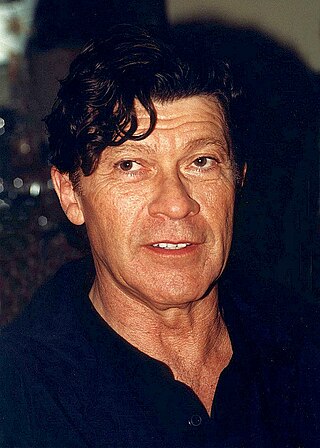
Jaime Royal "Robbie" Robertson was a Canadian musician of Indigenous ancestry. He was lead guitarist for Bob Dylan in the mid-late 1960s and early-mid 1970s, guitarist and songwriter with The Band from their inception until 1978, and a solo artist.

Richard Clare Danko was a Canadian musician, bassist, songwriter, and singer, best known as a founding member of the Band, for which he was inducted into the Rock and Roll Hall of Fame in 1994.

Mark Lavon "Levon" Helm was an American musician who achieved fame as the drummer and one of the three lead vocalists for The Band, for which he was inducted into the Rock and Roll Hall of Fame in 1994. Helm was known for his deeply soulful, country-accented voice, multi-instrumental ability, and creative drumming style, highlighted on many of the Band's recordings, such as "The Weight", "Up on Cripple Creek", and "The Night They Drove Old Dixie Down".

Ronald Cornett Hawkins was an American rock and roll singer, long based in Canada, whose career spanned more than half a century. His career began in Arkansas, United States, where he was born and raised. He found success in Ontario, Canada, and lived there for most of his life. Hawkins was an institution of the Ontario music scene for over 40 years. He was highly influential in the establishment and evolution of rock music in Canada.
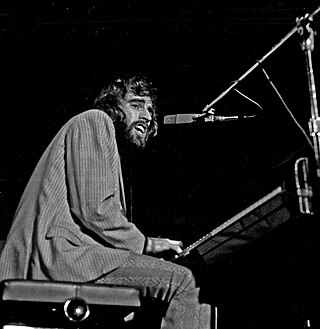
Richard George Manuel was a Canadian musician, singer, and songwriter, best known as a pianist and one of three lead singers in the Band, for which he was posthumously inducted into the Rock and Roll Hall of Fame in 1994.
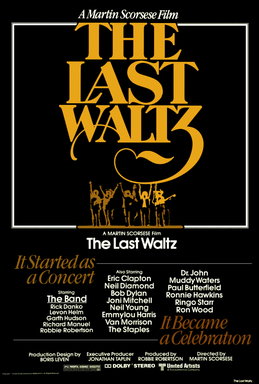
The Last Waltz was a concert by the Canadian-American rock group the Band, held on American Thanksgiving Day, November 25, 1976, at Winterland Ballroom in San Francisco. The Last Waltz was advertised as the Band's "farewell concert appearance", and the concert had the Band joined by more than a dozen special guests, including their previous employers Ronnie Hawkins and Bob Dylan, as well as Paul Butterfield, Bobby Charles, Eric Clapton, Neil Diamond, Emmylou Harris, Dr. John, Joni Mitchell, Van Morrison, Ringo Starr, Muddy Waters, Ronnie Wood, and Neil Young. The musical director for the concert was the Band's original record producer, John Simon.
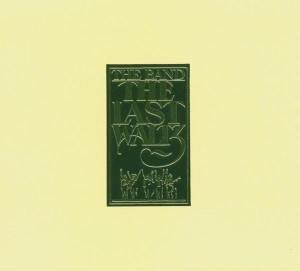
The Last Waltz is the second live album by the Band, released on Warner Bros. Records in 1978, catalogue 3WS 3146. It is the soundtrack to the 1978 film of the same name, and the final album by the original configuration of the Band. It peaked at No. 16 on the Billboard 200.

Jubilation is the tenth and final studio album by Canadian/American rock group the Band. Recorded in the spring of 1998 in Levon Helm's home studio in Woodstock, New York, it was released on September 15, 1998. For the first time since the group reformed without guitarist and songwriter Robbie Robertson, there were more originals than covers. Songs include "Last Train to Memphis", featuring guest guitarist Eric Clapton, Garth Hudson's solo instrumental closer "French Girls", Rick Danko's "High Cotton" and the ode to Ronnie Hawkins, "White Cadillac".

"The Stones I Throw (Will Free All Men)" is a single by Levon and the Hawks, released in 1965 on Atco Records. It was their first release under this name, following their previous single under the name Canadian Squires. Seemingly a comment by Robbie Robertson in favor of the Civil Rights Movement, the song is carried by Garth Hudson's organ, and is far less rooted in the heavy R&B stylings of the group's other three single sides. It is the link between their days with Ronnie Hawkins and the group's breakout 1968 LP, Music from Big Pink. In December, 1965 the song reached #22 on the CHUM Chart.

Across the Great Divide is a box set by Canadian-American rock group The Band. Released in 1994, it consists of two discs of songs from the Band's first seven albums, and a third disc of rarities taken from various studio sessions and live performances. The set is now out of print, having been replaced by the five-CD/one-DVD box set A Musical History which was released in September 2005.
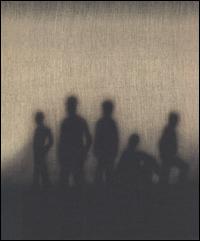
A Musical History is the second box set to anthologize Canadian-American rock group the Band. Released by Capitol Records on September 27, 2005, it features 111 tracks spread over five compact discs and one DVD. Roughly spanning the group's journey from 1961 to 1977, from their days behind Ronnie Hawkins and Bob Dylan through the departure of Robbie Robertson and the first disbanding of the group. The set includes highlights from each of the group's first seven studio albums and both major live recordings and nearly forty rare or previously unreleased performances.
"This Wheel's on Fire" is a song written by Bob Dylan and Rick Danko. It was originally recorded by Dylan and the Band during their 1967 sessions, portions of which comprised the 1975 album, The Basement Tapes. The Band's own version appeared on their 1968 album, Music from Big Pink. A version by Julie Driscoll with Brian Auger and the Trinity became a hit in 1968, peaking at number 5 on the UK Singles Chart and at number 13 in Canada. Live versions by the Band appear on their 1972 live double album Rock of Ages, as well as the more complete four-CD-DVD version of that concert, Live at the Academy of Music 1971, and the 2002 Box Set of The Last Waltz.
"Chest Fever" is a song recorded by the Band on its 1968 debut, Music from Big Pink. It is, according to Peter Viney, a historian of the group, the album track that has appeared on the most subsequent live albums and compilations, second only to "The Weight".

"Stage Fright" is the title track of the Band's third album, Stage Fright. It features Rick Danko on lead vocals and was written by Robbie Robertson. According to author Barney Hoskyns, Robertson originally intended it to be sung by Richard Manuel but it became clear that the song was better suited to Danko's "nervous, tremulous voice."
Stanley Martin Szelest was an American musician from Buffalo, New York, known for founding an influential blues band in the 1950s and 1960s, Stan and the Ravens, and later as a keyboardist with Ronnie Hawkins and, briefly, with The Band.

"The Shape I'm In" is a song by The Band, first released on their 1970 album Stage Fright. It was written by Robbie Robertson, who did little to disguise the fact that the song's sense of dread and dissolution was about Richard Manuel, the song's principal singer. It became a regular feature in their concert repertoire, appearing on their live albums Rock of Ages, Before the Flood, and The Last Waltz. Author Neil Minturn described the song as "straightforward rock." Along with "The Weight," it is one of the Band's songs most performed by other artists. It has been recorded or performed by Bo Diddley, The Good Brothers, The Mekons, The Pointer Sisters, She & Him, Marty Stuart and Nathaniel Rateliff and the Night Sweats.

Let It Rock is a Juno Award-nominated album that documents American-Canadian singer Ronnie Hawkins's 60th birthday celebration and concert at Massey Hall in Toronto, Ontario. The concert took place on January 8, 1995, and featured performances by Hawkins, Carl Perkins, Jerry Lee Lewis, the Band and Larry Gowan. Jeff Healey sat in on guitar for most, if not all, of the performances. Hawkins's band, the Hawks, or permutations of it, backed most, if not all, of the acts. All of the musicians performing that night were collectively dubbed "the Rock ‘N’ Roll Orchestra". The concert is among the last recorded of both Perkins and Rick Danko of the Band. An eponymous video of the concert was also released.
"Sleeping" is a song by The Band, first released on their 1970 album Stage Fright. It was also released as the B-side to the "Stage Fright" single. It was co-written by Robbie Robertson and Richard Manuel. This and “Just Another Whistle Stop” are the only two songs Manuel receives credit for on the album. Music critic Barney Hoskyns rates it as "one of Richard [Manuel's] liveliest performances" and "one of The Band's most intricate arrangements." The Band never featured the song on a live album.

The Night They Drove Old Dixie Down: The Best of the Band Live in Concert is a 1990 compilation of live recordings from American roots rock group the Band released by CEMA Special Markets.


















